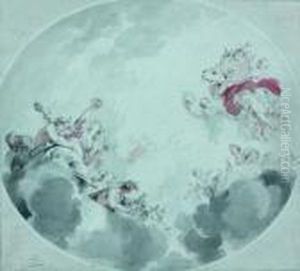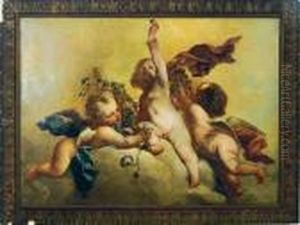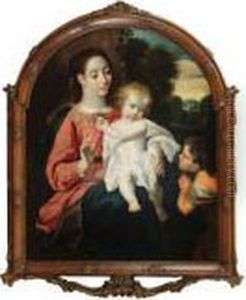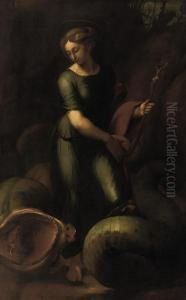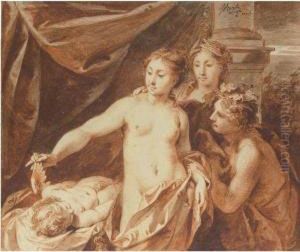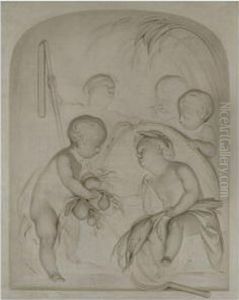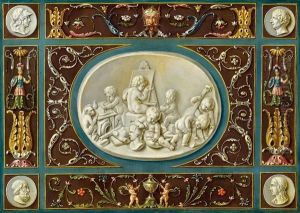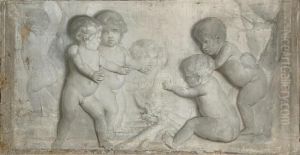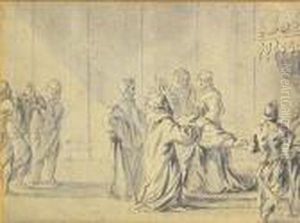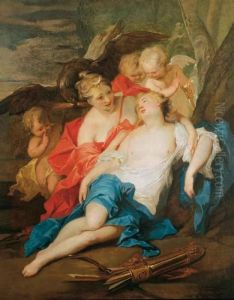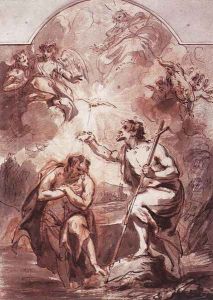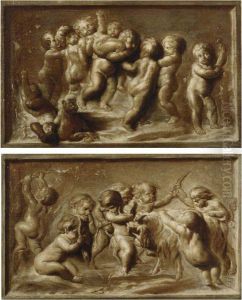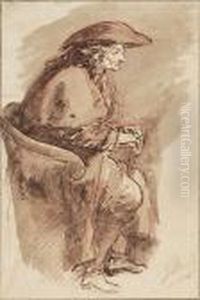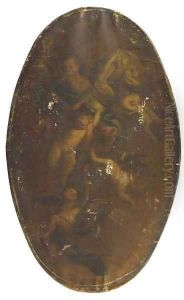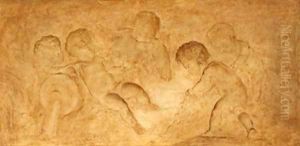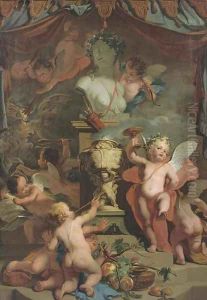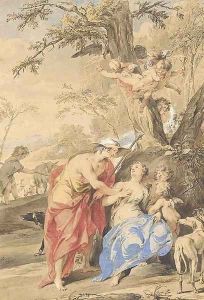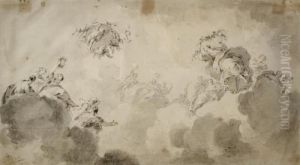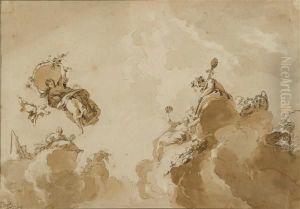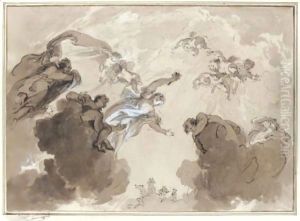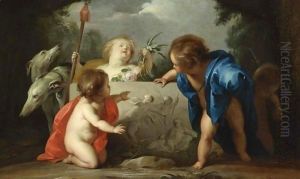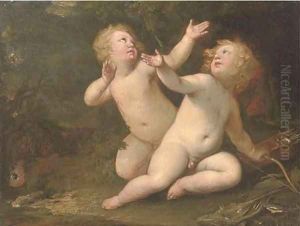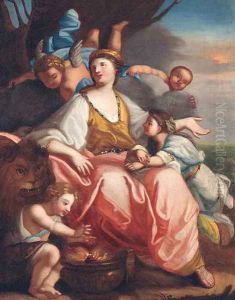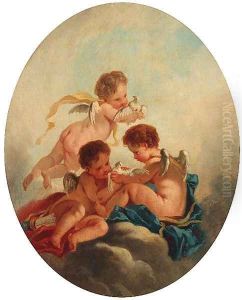Jacob de Wit Paintings
Jacob de Wit was a Dutch painter and draughtsman, celebrated for his trompe-l'œil ceiling and wall paintings that epitomize the ornate grandeur of Amsterdam's Baroque period. Born on December 19, 1695, in Amsterdam, he was apprenticed early to the painter Albert van Spiers. Between 1713 and 1715, de Wit studied in Antwerp under the guidance of Jacob van Hal, where he was deeply influenced by the works of Peter Paul Rubens.
After returning to Amsterdam in 1715, de Wit quickly established himself as a leading artist, specializing in decorative frescoes and altarpieces for Catholic hidden churches. His work was known for its delicate use of light and shadow, which gave his compositions an almost ethereal quality, earning him the nickname 'the Dutch Raphael.' De Wit's most famous works include the ceiling painting 'Apollo and Aurora' (1731), which remains a prime example of his mastery in rendering mythological subjects with a life-like presence.
Jacob de Wit was also renowned for his 'witjes,' monochrome oil sketches that mimicked the appearance of white marble bas-relief. These 'witjes' were sought after for their decorative quality and their ability to imitate sculptural elements in painting. Beyond his contributions to decorative arts, de Wit was a respected portrait artist and produced a number of historical and religious paintings throughout his career.
Despite the Protestant context of the Netherlands, de Wit, a Roman Catholic, found considerable success and was commissioned by both Protestant and Catholic patrons. His work contributed significantly to the interior design of many Amsterdam canal houses of the wealthy merchant class. De Wit served as the head of the Amsterdam Guild of Saint Luke for multiple terms, reflecting his prominent status in the art community.
Jacob de Wit passed away on November 12, 1754, in Amsterdam. His legacy continued through his influence on later artists and the preservation of his works in numerous Dutch museums. Today, he is regarded as one of the most important figures in 18th-century Dutch art, with his pieces offering a window into the opulent interiors and refined aesthetic of the era.
